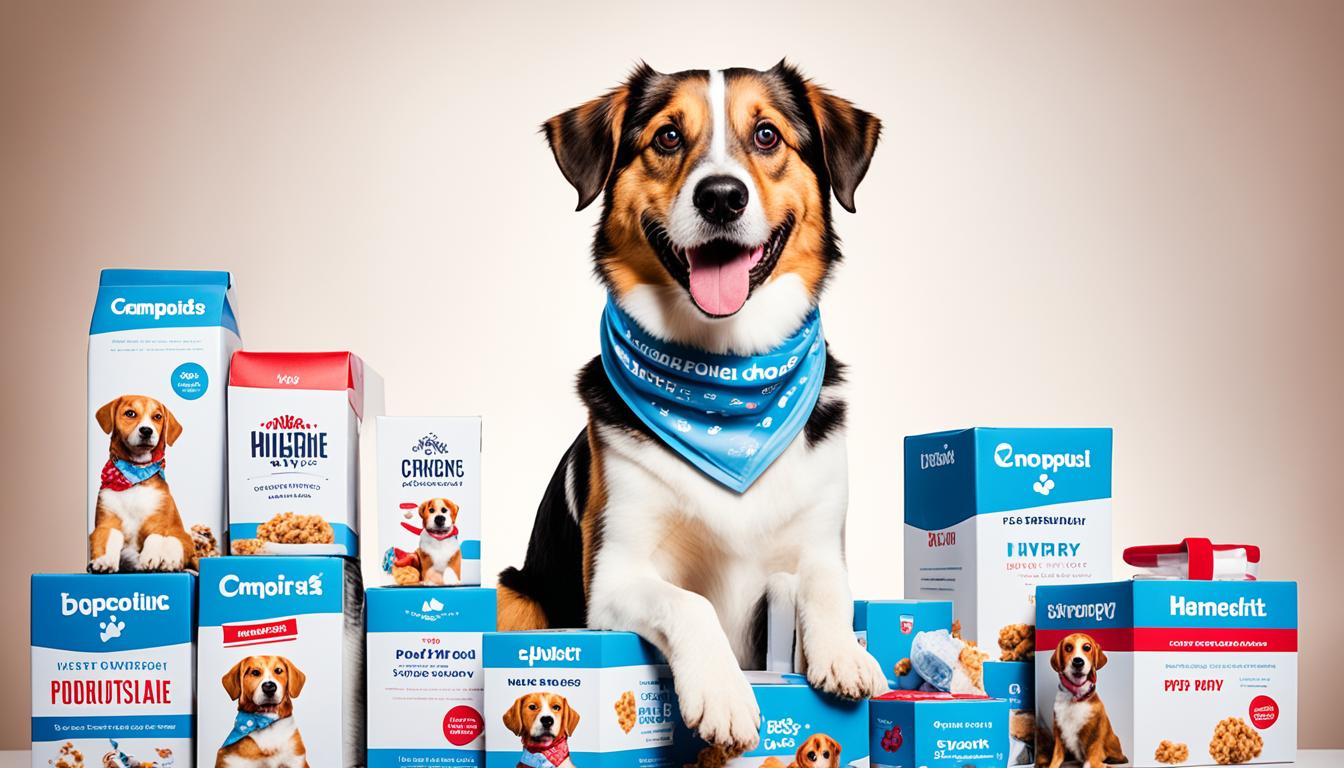Values and Lifestyle Segmentation (VALS) is a unique tool for marketers. It divides US adults into eight groups based on their mindsets and life stages. This breakdown gives companies insights into how people behave. Using VALS helps create marketing plans and communication that speaks directly to different groups.
The VALS system focuses on what drives people: ideals, success, or expressing themselves. It also looks at their resources. By digging into these areas, companies can understand what customers want. They can then talk to them in ways that click.
At the heart of VALS is psychographic segmentation. This method looks deeper than just age or income. It explores what people value and believe. Employing a technique like VALS allows businesses to really get to know their audience. This leads to sharper marketing strategies.
As figuring out consumer habits becomes key in marketing, VALS stands out. It clearly divides consumers into eight types. This clear division gives companies a strong understanding. With this knowledge, they can make their marketing more successful.
Key Takeaways:
- VALS is a marketing tool that segments US adults into eight distinct types based on psychological traits and demographics.
- The VALS framework consists of primary motivations and resources that shape consumer behavior.
- Psychographic segmentation techniques like VALS help businesses gain a deeper understanding of their target market.
- VALS provides a fresh perspective, rich consumer profiles, and distinctive communication styles for effective marketing strategies.
- By employing VALS, businesses can develop highly targeted marketing strategies and drive success in their marketing efforts.
The U.S. VALS Framework
The U.S. VALS Framework offers deep insights into consumer behavior. It showcases eight unique consumer segments and two key ideas: primary motivation and resources. These factors hugely influence consumer attitudes and choices.
Consumer Types
The framework sorts people into eight groups. These include innovators, thinkers, believers, achievers, strivers, experiencers, makers, and survivors. Each group has its own values, attitudes, and likes.
Primary Motivation
Consumers’ main drives come from ideals, achievements, or self-expression. Those moved by ideals value principles and social good. People driven by achievements aim for success and status. For some, self-expression matters most in showing their uniqueness.
Resources
Resources like energy, confidence, and creativity affect how people act on their motivations. These elements influence consumer interactions with products and brands. They play a large role in buying decisions and how consumers respond to ads.
This framework helps understand consumer actions better. It assists marketers in crafting their strategies. This way, they’re more likely to connect with the right customer groups.
VALS Typing and Strategic Marketing
VALS Typing is key in strategic marketing. It includes giving the VALS Survey to people and sorting them into one of eight consumer categories. This is vital for reaching communication goals and understanding target groups.
VALS Typing helps businesses see customer preferences in a new light. They can make custom consumer profiles. These profiles give marketers a deep understanding of their audience, allowing them to customize strategies and communication.
With VALS Typing, companies can match their messages to the unique motivations and resources of different consumer types. This means messages are more relevant to consumers, increasing the chances of getting their attention and sparking conversions.
The insights from VALS Typing help businesses fine-tune their marketing efforts by targeting specific segments. Knowing the values, attitudes, and behaviors of each consumer type lets businesses send more captivating marketing messages.
VALS Typing gives important info on consumer preferences. It helps businesses improve their marketing strategies and communication. With this knowledge, companies can make their brands stand out in the market and beat their competitors.
Benefits of VALS Typing in Strategic Marketing:
- Clear understanding of target populations
- Customized consumer profiles or personas
- Distinctive communication styles
- Effective marketing strategies
Using VALS Typing in marketing lets businesses make messages that really speak to their audience. Knowing about consumer profiles and preferences leads to marketing campaigns that engage people, boost brand loyalty, and increase sales.
To show how VALS Typing affects strategic marketing, look at this table:
| Consumer Type | Primary Motivation | Resources | Communication Goal |
|---|---|---|---|
| Experiencer | Self-expression | Energy, excitement, impulsiveness | Create buzz and excitement around a product or service through captivating and visually appealing advertising campaigns. |
| Believer | Ideals | Traditional values, religious beliefs | Convey a sense of trust, reliability, and alignment with beliefs to establish strong brand loyalty. |
| Striver | Achievement | Desire for success, materialism | Highlight how the brand or product can help consumers achieve their goals and aspirations. |
| Achiever | Achievement | Success, ambition, leadership | Emphasize the brand’s prestige, quality, and exclusivity to attract high-achieving individuals. |
As the table shows, each consumer type has their own motivations and resources that marketing can leverage. Understanding these details helps businesses craft communication campaigns that really reach their audience.
Applying VALS in Customer Surveys
Applying the Values and Lifestyle Segmentation (VALS) framework in customer surveys is a smart move. It helps understand consumer behavior better. This insight guides businesses to craft marketing strategies that hit the mark.
When businesses add VALS to their surveys, they learn what customers really like and how they spend their money. Encouraging participation in these surveys reveals key information. This helps pinpoint consumer segments and better target marketing efforts.
Target Market Analysis
Using VALS in surveys sheds light on the psychographic traits of a target market. Knowing what motivates customers and what they value allows the creation of detailed customer profiles. These profiles are crucial for effective marketing.
VALS data from surveys unveil trends in customer behaviors and needs. This helps identify who really wants what a business offers. As a result, products and messaging can be tailored to catch the right eyes.
Enhanced Consumer Understanding
VALS data enriches businesses with a deep understanding of their customers. It points out which consumer segments are more likely to connect with their brand. This paves the way for focused marketing strategies.
This data reveals what customers prefer and how they behave. That means businesses can adjust their strategies to meet customer needs better. Marketing efforts can then be customized to match VALS types, creating more personal connections.
Decision-Making and Targeted Marketing
VALS data from surveys is a goldmine for making smart marketing decisions. It clarifies customer psychographics and motivations. This allows businesses to spot growth opportunities and sharpen their targeting.
This information lets businesses split their audience into meaningful segments. They can then craft marketing messages that speak directly to each group’s unique desires. This kind of targeting makes marketing efforts far more effective.
Using VALS to Create a Product
VALS is great for making products. It helps businesses target certain people. They can match their brand and marketing plans with their audience’s needs. Knowing different VALS types helps businesses create appealing products.
Businesses can design products based on VALS results. Each type of VALS may like different designs or features. For instance, “Innovators” love the latest tech and unique features. “Believers” prefer classic designs and values.
Products that reflect VALS types build a strong bond with customers. This builds brand loyalty. Products feel more relevant and meet specific needs.
VALS also improves marketing strategies. By knowing different VALS types, marketers can create better ads. This helps reach the right people, raises brand awareness, and boosts sales.
Creating Targeted Products for Different VALS Types
Here are two examples of how VALS helps in product creation:
- Nike: Nike uses VALS to find out what different people like. For “Achievers,” it makes high-quality athletic gear for better performance. For “Thinkers,” it focuses on practical and durable sports clothes and shoes.
- Patagonia: Patagonia makes eco-friendly outdoor gear, appealing to “Sustainers.” It uses green materials and promotes less consumption. This makes Patagonia stand out as an ethical brand.
These cases show how VALS helps make products that connect with people’s values and needs. With VALS, companies can create a strong brand, improve marketing, and succeed in the market.
The Limitations of VALS
VALS can be a helpful marketing tool, helping us understand consumer groups and plan our strategies. But it’s important to see its limits. Consumer behavior is complex and doesn’t fit neatly into simple categories.
VALS gives us a general view of people’s preferences through psychological and demographic info. Yet, it’s key to remember that people’s actions and choices can be more complicated. They might not match up with the eight VALS types.
One issue with VALS is it tends to generalize. It helps us see patterns in what people like. But every consumer is unique, with special traits that VALS might overlook. If we only use VALS, we might make wrong guesses and choose strategies that don’t work well.
We should use VALS to get a basic idea of consumer likes. But it shouldn’t be the only tool we rely on to understand them. Mixing VALS with other research methods, like surveys and interviews, gives us a fuller picture.
Even though VALS gives us useful insights, we must remember it has its limits. Always combine it with other research approaches. That way, we get a complete view of who our consumers are.
Limitations of VALS
| Limitation | Description |
|---|---|
| Limited categorization | VALS framework classifies consumers into eight types, which may not fully capture the complexity of individual behavior. |
| Overgeneralization | Relying solely on VALS results may lead to making assumptions about consumer behavior that do not accurately reflect their preferences. |
| Complex consumer behavior | VALS provides a broad understanding of consumer behavior but may not capture the full complexity of their decision-making processes. |
Positioning and Value Propositions
Positioning is key in marketing. It outlines a product or service’s value clearly. This strategy aims to highlight what makes an offer unique to its target customers.
It includes details like the target market, what’s being offered, alternatives, and the unique benefits and features. These aspects tell customers how it stands out in the market.
Marketers work to find what makes their product special and similar to others. This helps them show off their edge in the market. By knowing what customers want, businesses can make their offers more appealing.
This makes customers more likely to choose their product over others.
Key Elements of a Value Proposition
The key parts of a value proposition define its unique value. They show why a product or service is great for its target customers:
- Target Customers: Define who the product or service is for. Know their needs and issues to tailor the value proposition.
- Offering: Talk about the main parts of the product or service. Share what makes it different or better than others available.
- Competitive Substitutes: Mention other products or services that could be chosen instead. Make sure your offer stands out and has clear advantages over these options.
- Benefits: Describe the benefits that customers will get. Highlight the value and how it addresses their problems or needs.
- Points of Differentiation: Point out what makes your offer unique. This could be about quality, performance, price, design, customer service, or something else important.
- Points of Parity: Also, talk about expected or necessary features. These show the product or service is comparable to others and a viable choice.
A smart value proposition makes an offer stand out. It forms a strong reason for customers to pick one product or service over another. This creates a competitive edge in the market.
| Points of Differentiation | Points of Parity |
|---|---|
| Unique feature A | Industry-standard quality |
| Superior customer service | Competitive pricing |
| Exclusive partnership | Fast and reliable delivery |
Examples of Brand Positions from a VALS Perspective
Brand positions use the VALS perspective to reach certain consumers. This method matches brand messages with consumer types. This way, businesses send marketing messages that their audience will like. Let’s look at two brands doing this:
Nutella Hazelnut Spread
Nutella is a favorite for breakfast. It offers a quick, yet nutritious, choice for moms who want the best for their kids’ meals. These moms look for both ease and health benefits. Nutella wins them over by highlighting the great taste and flexibility of their hazelnut spread. It fulfills mothers’ wishes to give their families a delightful and wholesome start to the day.
GoPro Hero HD Camera
GoPro makes its Hero HD cameras a must-have for those who love spontaneity and adventure. This group cherishes capturing their exciting experiences. GoPro caters to them by pointing out the cameras’ tough build, easy-to-carry design, and superior video quality. It attracts adventurers who are eager to share their explorations in a vivid and engaging way.
Nutella and GoPro show how brands can connect with specific groups. Using the VALS method helps companies understand what their customers truly value. This insight lets them craft their marketing and products to meet the wishes and dreams of their audience.
Crafting Strategic Messages and Advertising Campaigns
Creating strategic messages and ad campaigns is key in marketing. Marketers align their messages with the brand’s identity and what it stands for. This shows what makes a brand special in the market.
Strategic messages are made to deliver the brand’s main ideas, make it stand out, and click with the target audience. By knowing the market and competitors, marketers can spotlight the brand’s strong points. This builds a gripping story that grabs potential customers’ attention.
Ad campaigns are vital in showing the brand’s identity and value to more people. They aim to raise awareness, spark interest, and motivate the target audience to act. Clever campaigns use stories, visuals, and persuasion to touch consumers emotionally. Aligning the campaign with the brand’s core messages makes audience engagement and impactful outcomes possible.
Choosing a strategic path for messaging and ad campaigns ensures brands connect with the right people. Not every brand needs to reach everyone. Instead, they should reach out to certain groups that match the brand’s values. By talking directly to these groups’ needs, marketers can forge strong bonds and build loyalty.
In short, making strategic messages and ad campaigns is vital in marketing. Aligning these with the brand’s identity and values helps create stories that appeal to the target group. With smart planning and execution, these strategies can boost brand awareness, draw in customers, and aid in business growth.
Conclusion
VALS in Marketing is a great way to understand consumer groups and build marketing plans that work. By looking at people’s behaviors and where they come from, companies can identify different customer types. They can then customize their ads, products, and ways of communication to match the tastes of specific groups. This method helps create more personal and captivating experiences for customers, which boosts brand loyalty and increases sales.
However, it’s key to remember that VALS isn’t perfect and can’t capture all aspects of consumer behavior. Still, it offers a useful framework for smart marketing choices. With VALS, companies get insights into what drives their customers and what they prefer. This knowledge helps them design targeted and fitting marketing drives. Such tailored approaches not only make customers happier but also help the business grow by bringing in and keeping more customers.
In essence, VALS helps companies make smarter marketing strategies by focusing on consumer segmentation. By using this approach, businesses can show how they are different from their rivals and connect well with their audience. Understanding the varied needs and wants of their consumers enables companies to create impactful messages and experiences. This leads to real engagement and measurable success.







